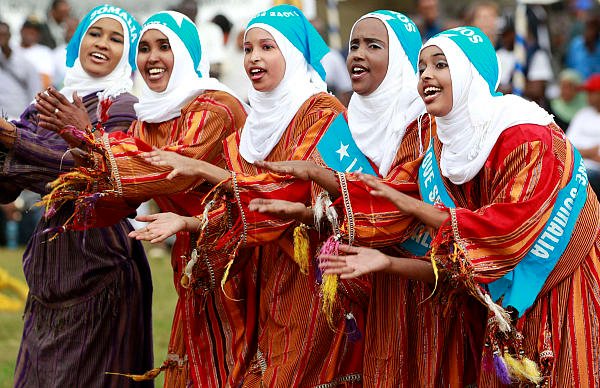UN warns that poor countries bear greater refugee burdens
The UN's World Refugee Day report shows that 80 percent of refugees are hosted by developing countries, not the richer nations that have the economic capacity to absorb and host refugees.
 Somali refugees perform a traditional dance during celebrations to mark World Refugee Day in Kenya's capital Nairobi June 20, 2011.
Somali refugees perform a traditional dance during celebrations to mark World Refugee Day in Kenya's capital Nairobi June 20, 2011.
If there is confusion over refugees, it may have something to do with the fact that there are so many definitions and acronyms to contend with.
.A refugee is someone who flees conflict or instability and seeks refuge in another country. There are some 15 million refugees globally.
An internally displaced person (IDP) is someone who flees his home because of conflict, instability, or natural causes such as drought, but remains in his own country. There are 27.5 million internally displaced persons worldwide, cut off from their farmlands and livelihoods, and many of them are dependent on international assistance to survive.
An asylum seeker is someone who flees his country because of political reasons and seeks a protected legal status in another country. There are 850,000 asylum seekers in the world; one fifth of them now live in South Africa.
An immigrant is someone who leaves his country for any and all of these reasons, or simply to seek better economic opportunities.
Conflating these different categories of people is an unfortunately common practice, whether intentional or otherwise, and can create xenophobia and put pressure on host nations to close up their doors. But closing a door does little to resolve the initial cause of mass displacement, and it can have disastrous effects on some of the world’s most vulnerable citizens.
'A humanitarian emergency'
Consider the world’s largest concentration of refugees, the three camps around the Kenyan town of Dadaab, near the Somali border. Designed 20 years ago for 30,000 refugees in each camp, Dadaab now holds roughly four times its designed capacity, with 360,000 camp residents. The aid group Doctors Without Borders, which provides health care at the three camps, says that the refugees continue to flow in and at the current rate of growth, Dadaab will have a population of 450,000 by the end of the year – about twice the population of Geneva.
“More refugees are on their way,” said nurse Nenna Arnold, in a recent report released by Doctors Without Borders. “We are already at bursting point, but the figures keep growing. This situation is a humanitarian emergency.”
The UNHCR has been working with the Kenyan government to allow the camps at Dadaab to expand, noting that 40,000 Somali refugees are already setting up camp on the outskirts of Dadaab, unable to receive any source of food or medical relief.
“We are seeking to get the final go-ahead from the Kenyan government to populate another camp in Dadaab,” Andy Needham, spokesman for UNHCR’s Somalia program in Nairobi, told The Christian Science Monitor. “We do continue to count on the support of donor nations in terms of funding, but this is not just about funding. We call on the world to advocate for refugees, in terms of extension of camps so that the refugees do get assistance they need.”
- January 11, 2012 — Human Trafficking Awareness Day
- Why is the UK government so afraid to speak of Armenian genocide?
- Seventy per cent of World Population Live in Countries with High Restrictions on Religious Beliefs
- China blocks 'underage' Tibetan monks from returning to monasteries
- Christians continue to flee Iraq. Is there hope for them?
- Democracy is a religion that has failed the poor
- Assisted dying legislation passes despite faith leaders' campaigning
- International Women's Day
- Christians and Muslims a year since the start of the Arab spring
- Who wants to destroy the family?


 Votes : 0
Votes : 0









